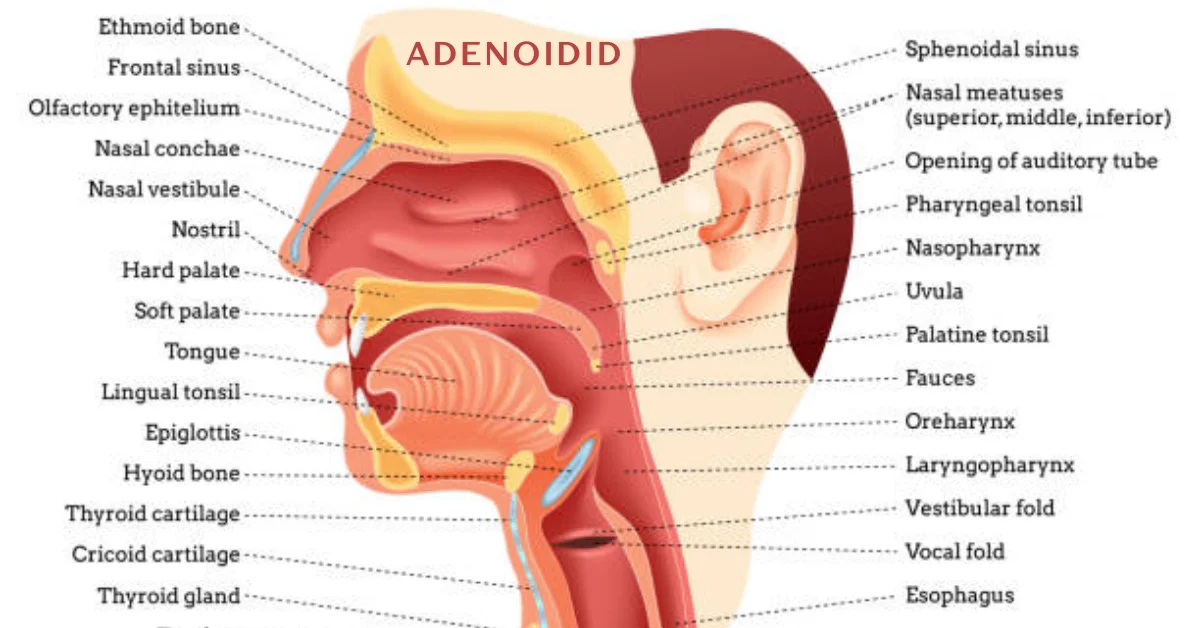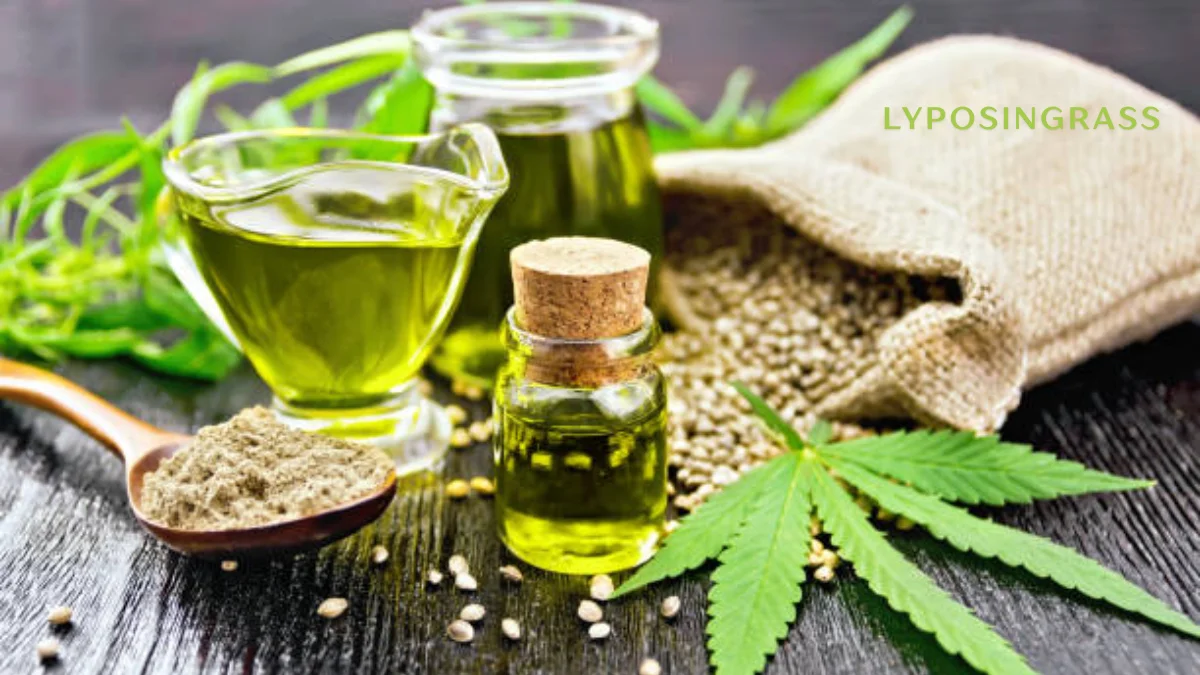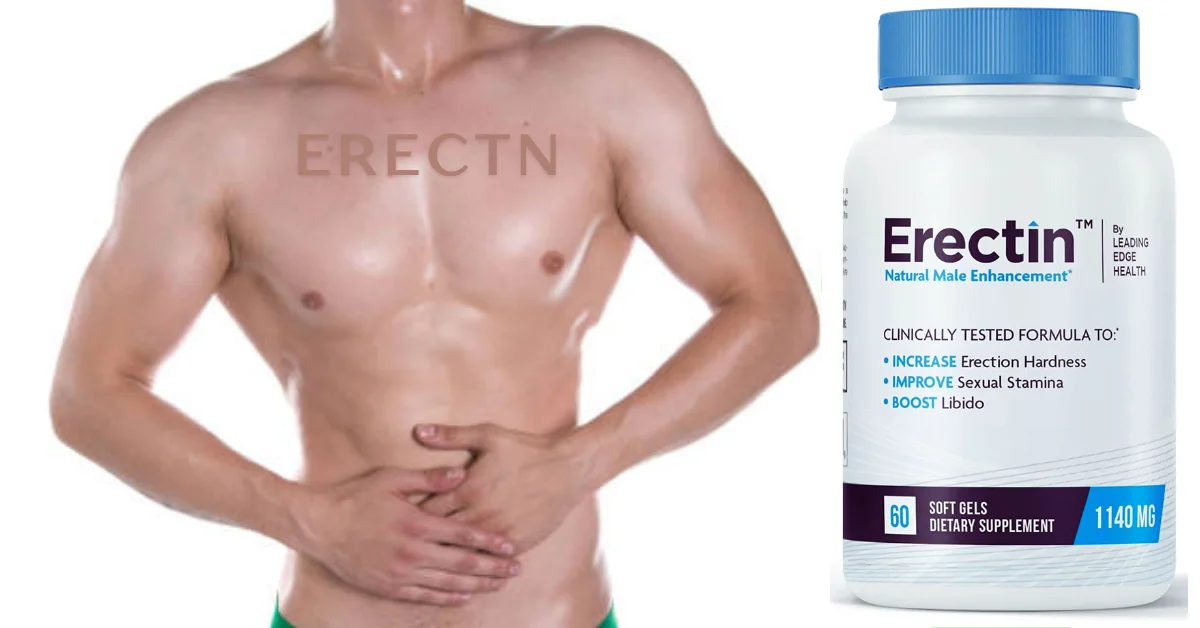Health
Adenoidid: Complete Guide to Diagnosis and Effective Treatments

Adenoidid often fly under the radar when it comes to discussions about health, but they play a crucial role in our immune system. These small masses of lymphatic tissue are located at the back of your nasal cavity and help defend against infections. However, when they become enlarged or infected leading to adenoiditis they can cause a range of uncomfortable symptoms that affect daily life.
If you’re experiencing persistent congestion, snoring, or frequent ear infections, you might be dealing with issues related to your adenoid. Understanding what adenoiditis is and recognizing its signs can empower you to seek appropriate treatment options. This guide will walk you through everything you need to know about adenoid from diagnosis and symptoms to effective treatments and preventive measures so that you can live life without unnecessary discomfort. Let’s dive into this essential topic!
What are Adenoidid?
The adenoid are tiny glandular tissues positioned behind the nasal passage. These tissues are part of the lymphatic system and play a vital role in immune function.
They help trap pathogens like bacteria and viruses that enter through the nose and mouth. By doing so, adenoidid contribute to your body’s first line of defense against infections.
While they are essential during childhood for developing immunity, adenoidid often shrink as we grow older. In many adults, they may be hardly noticeable or may have disappeared entirely.
However, in some cases especially in children the adenoidid can become enlarged or infected. Adenoiditis, if ignored, may result in multiple complications affecting overall health. Understanding their role helps emphasize why care is needed when problems arise with these tiny yet significant glands.
Symptoms and Diagnosis of Adenoiditis
Adenoiditis primarily affects children, often causing a range of symptoms that can be distressing. Common signs include nasal congestion and difficulty breathing through the nose. This can lead to an open-mouth breathing habit, which may seem unusual for little ones.
Recurring sore throats or constant throat discomfort can signal adenoid issues. You might notice your child snoring at night due to blocked airways. Some children even experience earaches as fluid builds up behind the eardrum.
Doctors generally assess symptoms, medical history, and may use a small scope to examine the adenoidid closely. In some cases, imaging tests like X-rays can help evaluate their size and condition more accurately. Identifying these symptoms early is crucial for effective management and treatment options down the line.
Causes and Risk Factors
Adenoiditis is often triggered by infections, particularly viral or bacterial ones. The adenoidid may swell as they respond to invading viruses or bacteria.
Kids are particularly vulnerable because their immune defenses are still maturing. Frequent colds or respiratory issues increase the likelihood of adenoid enlargement and inflammation.
Environmental factors also play a role. Exposure to allergens like pollen, dust mites, and pet dander can irritate the adenoidid. Exposure to polluted air and passive smoke can worsen the likelihood of adenoid problems.
Genetics may contribute as well; if parents have had similar issues, their children might be at higher risk too. Conditions such as allergies or chronic sinusitis also elevate the probability of developing adenoid problems over time.
Understanding these causes helps in managing symptoms effectively and taking proactive steps toward wellness.
Types of Treatment for Adenoiditis
When it comes to treating adenoiditis, several options are available based on the severity of the condition.
For mild cases, doctors often recommend watchful waiting. This approach allows time for the body to heal naturally. Meanwhile, over-the-counter pain relievers can help alleviate discomfort.
If symptoms persist or worsen, nasal corticosteroids may be prescribed. Such treatments help to calm swelling and inflammation in the adenoid tissue.
In more severe situations where chronic issues arise, a surgical procedure called adenoidectomy might be necessary. This involves removing enlarged adenoidid that cause breathing difficulties or recurring infections.
Additionally, lifestyle changes like practicing good hygiene can support treatment efforts. Staying hydrated and using a humidifier at home also contribute positively to recovery.
The right treatment varies from person to person; consulting with an ENT specialist ensures tailored care that addresses individual needs effectively.
Medications for Adenoiditis
Medications play a vital role in managing adenoiditis. Typically, doctors prescribe antibiotics when bacterial infections are involved. These can help reduce inflammation and fight off the infection.
Decongestants may also be recommended to relieve nasal congestion. They work by shrinking swollen tissues in the nasal passages, making breathing easier for those affected.
In some cases, corticosteroids are useful to manage severe inflammation. These medications can provide significant relief from symptoms and reduce swelling in the adenoidid.
Sometimes, antihistamines might be suggested if allergies exacerbate the condition. By addressing allergic reactions, they can help alleviate discomfort associated with adenoiditis.
Always consult healthcare providers before starting any medication regimen. This ensures that treatments align with individual health needs and conditions for optimal results.
Surgical Options for Severe Cases
Surgery is often considered when adenoiditis becomes severe and persistent. For children experiencing frequent infections or significant breathing difficulties, adenoidectomy may be the recommended course of action.
This procedure involves the removal of the adenoidid, which can lead to immediate improvement in symptoms. Patients typically recover quickly, with many returning to normal activities within a few days.
Adenoidectomy is usually performed under general anesthesia. Surgeons use specialized instruments to ensure precision during the operation. While complications are rare, they can include bleeding or infection at the surgical site.
After surgery, it’s crucial to watch for complications while maintaining proper hydration and rest. Most individuals find relief from chronic respiratory issues after surgery, enhancing their quality of life significantly.
Alternative Remedies and Lifestyle Changes to Manage Adenoiditis
Managing adenoiditis can often benefit from alternative remedies and lifestyle changes. Incorporating a balanced diet rich in fruits, vegetables, and whole grains boosts the immune system. Consuming antioxidant-rich foods like berries and dark leafy vegetables supports overall immune health.
Staying hydrated is essential too. Drinking plenty of water helps maintain mucous membranes and reduces swelling. Herbal teas with anti-inflammatory properties may also provide relief.
Regular exercise contributes to overall health by enhancing respiratory function. Activities like swimming or cycling promote better breathing patterns.
Practicing good hygiene is vital for preventing infections that lead to adenoid issues. Regular handwashing can minimize exposure to germs.
Consider using a humidifier at home; moist air can ease discomfort during sleep. Additionally, practicing nasal irrigation might help clear mucus buildup and alleviate symptoms naturally without medication.
Precautions and Complications
Taking precautions against adenoiditis is essential for maintaining health, especially in children. Good hygiene practices can significantly reduce the risk of infections. Regular hand-washing and teaching kids to avoid close contact with sick individuals are effective strategies.
Monitoring your child’s symptoms is crucial. If there’s persistent snoring or difficulty breathing during sleep, it may indicate swollen adenoidid needing medical attention. Early intervention helps prevent complications like chronic ear infections or sinus issues.
Complications can arise if adenoiditis remains untreated. Sleep apnea is a serious concern that affects not only sleep quality but also overall health and development in children. Frequent respiratory illnesses can lead to missed school days and hinder social interactions as well.
Stay vigilant about your child’s overall wellbeing, ensuring they maintain a balanced diet and proper hydration to strengthen their immune system against possible flare-ups of adenoid-related conditions.
Tips for Prevention
Preventing adenoiditis starts with good hygiene. Teach children the importance of handwashing, especially before meals and after playing outside. This simple habit can significantly reduce infections.
Encouraging a healthy diet rich in fruits and vegetables also helps boost immunity. Foods high in vitamins A and C are particularly beneficial for maintaining respiratory health.
Stay away from secondhand smoke, as it can irritate airways and increase the risk of respiratory issues. Create a smoke-free home environment to protect your family’s health.
Regular check-ups with a healthcare provider can catch problems early on. They may suggest routine screenings if your child has frequent colds or sinus infections.
Ensure adequate hydration. Drinking enough water keeps mucus membranes moist, which supports overall throat and nasal function during cold seasons or allergy times.
Conclusion: Living a Healthy Life with Adenoiditis
Living with adenoiditis can present unique challenges, but it is manageable with the right approach. Understanding your condition and its symptoms allows for better communication with healthcare providers. Whether through medication, surgical options, or lifestyle changes, there are effective ways to alleviate discomfort and improve quality of life.
Incorporating healthy habits such as a balanced diet and regular exercise can also play a vital role in managing adenoiditis. Staying informed about potential complications helps in seeking timely medical attention when necessary.
Engaging in preventive measures like good hygiene practices may reduce the risk of infections that could exacerbate symptoms. By taking proactive steps towards health management, individuals can navigate their journey with adenoiditis more confidently.
Embracing these strategies promotes not just relief from symptoms but an overall healthier lifestyle moving forward. With knowledge and support, living well with adenoiditis is entirely achievable.
Health
www .befitnatic .com: Simple Steps to Stay Fit and Motivated

Introduction to www .Befitnatic .com
Welcome to www.befitnatic.com, your ultimate destination for fitness enthusiasts and those looking to kickstart their health journey. In a world where we often juggle countless responsibilities, prioritizing our well-being can feel like a daunting task. Yet, staying fit and motivated is not just about hitting the gym; it’s about embracing a lifestyle that nurtures both body and mind. Whether you’re an experienced athlete or just starting out, this blog will provide you with practical tips and insights to help you stay on track. Let’s explore how simple adjustments in your daily routine can lead to lasting changes!
Importance of Staying Fit and Motivated
Staying fit and motivated is crucial for both physical and mental well-being. Regular exercise boosts energy levels, helping you tackle daily tasks with vigor.
Moreover, maintaining fitness enhances your mood. Endorphins released during workouts can create a sense of happiness and reduce stress. This positive outlook often carries over into other aspects of life.
Motivation plays a key role in achieving fitness goals. It drives consistency, which leads to progress over time. When you feel motivated, you’re more likely to stick to your routine.
Incorporating small changes can make a big difference. Even short bursts of activity throughout the day count towards overall health.
Staying connected with like-minded individuals fosters accountability and encouragement. Sharing experiences with others on platforms such as www.befitnatic.com can boost motivation even further.
Tips for Incorporating Exercise into Daily Routine
Finding time to exercise can be a challenge in our busy lives. However, small changes can make a big difference.
Start by setting aside just 10 minutes each day for physical activity. This could be a brisk walk or quick stretches at home. Gradually increase this time as it becomes part of your routine.
Incorporate movement into everyday tasks. Take the stairs instead of the elevator, or do squats while waiting for your coffee to brew.
Utilize breaks during work hours for short workouts. A five-minute dance party or some jumping jacks can energize you and break up long periods of sitting.
Consider partnering with a friend for accountability. Exercising together can make it enjoyable and keep you motivated on days when enthusiasm wanes.
Healthy Eating Habits and Meal Planning
Healthy eating habits start with mindful choices. Focus on whole foods like fruits, vegetables, lean proteins, and whole grains. These options nourish your body and keep you energized throughout the day.
Meal planning can simplify your week. Set aside time to choose recipes that excite you. This approach not only saves time but also helps avoid last-minute unhealthy decisions.
Batch cooking is a game-changer. Prepare larger quantities of meals and portion them for easy access during busy days. You’ll find it easier to stick to healthy options this way.
Don’t forget about hydration! Drinking plenty of water supports overall health and aids digestion. Add flavor with fresh herbs or slices of citrus if plain water feels boring.
Keep snacks handy too nuts, yogurt, or sliced veggies make great choices between meals. These small adjustments will help maintain energy levels while supporting your fitness journey effortlessly.
Mental Health and Self-Care Practices
Mental health is just as important as physical fitness. Taking care of your mind can dramatically enhance your overall well-being. Simple practices, like mindfulness and meditation, pave the way for a clearer mindset.
Incorporate breathing exercises into your routine to reduce stress levels. Just a few minutes each day can make a difference in how you feel.
Self-care isn’t selfish; it’s essential. Prioritizing activities that bring you joy like reading or painting can boost your spirits significantly.
Setting boundaries also plays a crucial role in mental wellness. Learn to say no when needed, allowing time for yourself without guilt.
Remember that connecting with others fosters emotional support too. Engaging with friends or family helps build resilience against life’s challenges.
Make self-reflection part of your journey. Journaling about thoughts and feelings provides clarity and insight into personal growth.
Utilizing Befitnatic.com for Workout Plans and Tracking Progress
Befitnatic.com offers a tailored approach to fitness with its extensive workout plans. Users can find routines that suit their personal goals, whether it’s weight loss, muscle gain, or improving endurance. Each plan is designed by experts and caters to various fitness levels.
Tracking progress becomes seamless with the integrated tools on the platform. You can log workouts easily and monitor your achievements over time. This visibility keeps motivation high as you see tangible results from your efforts.
The user-friendly interface allows for customization of workout schedules. Integrate your preferences and adapt plans as needed without feeling overwhelmed.
Engaging with the community features adds another layer of support; sharing milestones with others fosters accountability. By utilizing Befitnatic.com effectively, you’re not just following a routine—you’re creating a lifestyle that prioritizes health and well-being.
Community Support and Accountability on www .Befitnatic .com
Community support is a game changer when it comes to fitness. At www.befitnatic.com, you’re not alone on your journey. You join a vibrant community of like-minded individuals who share similar goals.
Engagement with others can spark motivation and keep you accountable. Sharing milestones, challenges, and victories creates a sense of camaraderie that helps everyone push through tough days.
The platform offers forums for discussions where members can seek advice or encouragement from one another. This connection fosters an environment where accountability thrives.
Many users find that sharing their workout plans or meal prep photos keeps them committed. It’s all about having someone cheer you on or lend an ear during difficult moments.
Whether it’s through group challenges or supportive messages, the community at www.befitnatic.com enhances your commitment to personal wellness in ways that solo efforts may not achieve.
Conclusion: Taking Small Steps Towards a Healthier.
Taking small, consistent steps can lead you towards a healthier and happier life. Every effort counts, whether it’s incorporating exercise into your daily routine, making mindful eating choices, or prioritizing your mental well-being. Remember that motivation may fluctuate, but with the right tools and support from platforms like www.befitnatic.com, you can stay on track.
The journey to fitness is personal and unique for everyone. Embrace it at your own pace. Use Befitnatic’s resources to create tailored workout plans that fit seamlessly into your lifestyle while tracking your progress along the way.
Connect with others who share similar goals for encouragement and accountability. Community support fosters a sense of belonging and helps keep you motivated during challenging times.
As you take these small steps forward whether through physical activity or self-care practices remember that each choice contributes to building a healthier version of yourself. Let www .befitnatic. com be part of this transformative journey toward wellness where every step matters in shaping not just how you look but also how you feel inside and out.
Health
Lyposingrass: Powerful Plant for Health and Green Farming

Introduction to Lyposingrass and its Benefits
Imagine a plant that not only nourishes your body but also supports sustainable farming practices. Welcome to the world of lyposingrass, an extraordinary green wonder that is gaining attention for its incredible health benefits and its role in eco-friendly agriculture. This remarkable grass is packed with nutrients and has been making waves among health enthusiasts and farmers alike.
Lyposingrass offers more than just lush greenery; it’s a powerhouse filled with potential. Whether you’re looking to enhance your diet or explore greener farming methods, this plant might just be what you need. Let’s delve into the numerous advantages of incorporating lyposingrass into your life and see how it can transform both personal well-being and agricultural practices.
The Nutritional Value of Lyposingrass
Lyposingrass is a nutritional powerhouse packed with vitamins and minerals. Rich in antioxidants, it helps combat oxidative stress in the body.
The plant contains essential amino acids crucial for muscle repair and growth. These components can be particularly beneficial for athletes or anyone looking to enhance their physical performance.
Moreover, lyposingrass is an excellent source of dietary fiber. Fiber supports digestive health by promoting regular bowel movements and maintaining gut flora balance.
This green marvel also provides significant levels of calcium and magnesium, vital for bone strength and overall cardiovascular health.
Incorporating this grass into your meals offers a natural way to boost nutrient intake while supporting your wellness journey. Its unique flavor profile makes it versatile enough for various dishes, from smoothies to salads.
How Lyposingrass Can Improve Health
Lyposingrass is gaining attention for its remarkable health benefits. Rich in antioxidants, it helps combat oxidative stress in the body. This can lead to improved cellular function and overall well-being.
Additionally, Lyposingrass has anti-inflammatory properties. Regular consumption may alleviate symptoms of chronic conditions such as arthritis and heart disease. The plant supports a balanced immune response, making you less susceptible to common illnesses.
Its natural fiber content promotes digestive health. Incorporating Lyposingrass into meals can aid digestion and support gut flora.
Moreover, this powerful grass contains essential vitamins and minerals that contribute to better energy levels throughout the day. With increased vitality comes enhanced mental clarity too.
Many users report improved mood and reduced anxiety when they include Lyposingrass in their diet regularly. Its adaptogenic qualities help the body respond better to stressors while promoting relaxation.
Green Farming with Lyposingrass
Green farming practices are gaining momentum, and lyposingrass is at the forefront of this movement. This resilient plant thrives in various climates, making it an ideal choice for sustainable agriculture.
Farmers who incorporate lyposingrass into their fields often notice improved soil health. Its deep root system helps prevent erosion while enhancing nutrient retention. This leads to healthier crops with better yields.
Moreover, lyposingrass requires minimal water compared to traditional crops. This characteristic makes it a valuable asset in regions facing drought conditions. By reducing water usage, farmers can cultivate more land sustainably.
The plant also acts as a natural pest deterrent, minimizing the need for harmful pesticides. Embracing lyposingrass not only benefits individual farms but contributes positively to the environment as well.
As awareness grows around eco-friendly practices, integrating lyposingrass could be a game-changer in modern agriculture.
Success Stories of Farmers Using Lyposingrass
Farmers across various regions have begun to embrace lyposingrass, witnessing remarkable transformations in their practices. One success story comes from a small farm in the Midwest, where a couple integrated this powerful plant into their rotation. They reported healthier soil and increased biodiversity on their land.
In another instance, farmers in South America adopted lyposingrass for its resilience against pests and diseases. This shift has allowed them to reduce chemical inputs significantly while boosting crop yields.
Meanwhile, an organic farmer noted that incorporating lyposingrass improved water retention in the fields. This adjustment not only lessened irrigation needs but also enhanced overall plant vitality during dry spells.
These stories highlight how lyposingrass is more than just a crop; it’s a step toward sustainable agriculture. Each farmer’s journey demonstrates the potential of this versatile grass to transform farms into thriving ecosystems.
How to Incorporate Lyposingrass into Your Diet and Lifestyle?
Incorporating lyposingrass into your diet can be simple and enjoyable. Start by adding fresh lyposingrass leaves to salads for a zesty kick. Their unique flavor complements various greens beautifully.
You can also blend it into smoothies. Just toss in a handful with your favorite fruits and vegetables for an energizing drink that boosts nutrition.
For those who enjoy cooking, consider using dried or powdered lyposingrass as a seasoning. It works wonders in soups, stews, and marinades, enhancing the overall taste profile of dishes.
Tea enthusiasts will love brewing warm infusions with dried leaves. This soothing beverage offers both comfort and health benefits.
Explore creative ways to use lyposingrass’s in baking or desserts. Its subtle flavor pairs well with sweet recipes like muffins or even homemade energy bars. The possibilities are endless!
Conclusion: Embracing the Power of Lyposingrass for a Healthier You and a
Lyposingrass’s is more than just a plant; it’s a pathway to better health and sustainable farming practices. With its impressive nutritional profile and potential to enhance wellness, anyone can benefit from incorporating this powerful grass into their life.
Whether you’re looking for ways to boost your immune system or searching for innovative solutions in agriculture, lyposingrass’s offers promising options. Farmers have experienced remarkable success by integrating it into their practices, leading to healthier crops and improved yields.
Adding lyposingrass’s to your diet is simple. You can enjoy it as a tea, sprinkle it on salads, or blend it into smoothies. Its versatility makes it easy to adapt in various culinary creations.
Embracing the power of lyposingrass’s not only contributes positively to personal health but also supports eco-friendly farming initiatives that nourish the planet. By choosing this remarkable plant, you take steps toward a healthier lifestyle while promoting sustainability in agriculture a win-win situation for all!
Health
Erectn Guide: Physiology, Issues, and Modern Solutions

Introduction to the Erectn
Erectn is a topic that often dances around the edges of conversation, shrouded in both intrigue and stigma. Yet, it plays a crucial role in men’s health and overall well-being. Understanding how erections occur can demystify their complexities and help men navigate challenges more effectively.
Whether you’re curious about the biological mechanics at play or seeking solutions for common issues, this guide will shed light on everything related to erectn. From anatomy to mental health’s impact on sexual function, we’ll explore key aspects that contribute to a fulfilling intimate life. Join us as we break down barriers and provide insights into maintaining healthy erections through both traditional methods and modern innovations. Let’s dive right in!
The Basic Anatomy of an Erection
Understanding the basic anatomy of an erection is crucial for grasping how this complex process works. The process of an erection starts in the brain when arousal sends a chain of stimulating signals.
These signals prompt blood vessels to relax and open up. This process increases blood circulation into the penis. The spongy tissues within it called corpora cavernosa—expand as they fill with blood. This expansion leads to increased pressure, causing the penis to stiffen.
At full erection, compression occurs in nearby veins, restricting blood flow out of the penis. This intricate balance keeps erections firm for sexual activity. Factors like nerves and hormones play essential roles too.
Any disruption in this delicate system can lead to issues with erectile function. Understanding these anatomical elements helps demystify what happens during an erection and why certain problems may arise.
Common Erection Issues and Their Causes
Erection issues can arise from various factors, affecting men of all ages. One common problem is erectile dysfunction (ED), which often stems from physical or psychological causes.
Physical health plays a significant role. Conditions like diabetes, heart disease, and obesity can hinder blood flow to the penis, making it difficult to achieve an erection. Disruptions in hormone levels, especially reduced testosterone, can play a role in erectile issues.
On the psychological side, stress and anxiety are frequent culprits. Performance pressure during intimate moments can create a vicious cycle of fear and disappointment.
Lifestyle choices cannot be overlooked either. Smoking and excessive alcohol consumption impact circulation negatively. Poor diet and lack of exercise exacerbate these problems further.
Recognizing the underlying causes is essential for effective treatment options tailored to individual needs. Understanding these issues allows for better communication with healthcare providers about available solutions.
Traditional Solutions for Erectile Dysfunction
When it comes to traditional solutions for erectile dysfunction, a few methods have stood the test of time. Medications like Viagra and Cialis have become household names. They work by increasing blood flow to the penis, helping men achieve an erection.
Herbal remedies also play a role in many cultures. Ginseng and yohimbine are popular choices that some swear by. These natural options claim to enhance libido and improve sexual performance.
For others, lifestyle changes can bring significant improvement. Regular exercise, a balanced diet, and quitting smoking often yield positive results.
Therapy or counseling is another classic approach addressing emotional factors related to erectile dysfunction. Stress or anxiety can deeply impact performance, making these sessions valuable for many couples seeking support together.
While these traditional methods offer hope, they may not be suitable for everyone. Reviewing every possible option is essential before choosing the most suitable solution.
Modern Solutions for Erectile Dysfunction
Modern solutions for erectile dysfunction have evolved significantly, offering various approaches tailored to individual needs. One of the most popular options is oral medication. Drugs like Viagra and Cialis work by enhancing blood flow, helping achieve an erection more easily.
Another innovative solution is vacuum erection devices (VEDs). Vacuum devices work by pulling blood into the penis, helping to achieve an erection. They can be especially useful for those who prefer non-invasive methods.
For men seeking longer-term results, penile implants are an option worth considering. These surgically placed devices provide a permanent solution for ED while allowing spontaneity in intimate moments.
Additionally, shockwave therapy has emerged as a cutting-edge treatment that uses acoustic waves to stimulate blood vessel growth and improve erectile function over time. Each modern approach offers unique benefits that cater to varying preferences and circumstances.
The Role of Mental Health in Erectile Function
Emotional well-being is deeply linked to maintaining healthy erectile performance. Emotional well-being directly impacts sexual performance and desire. Stress, anxiety, and depression can create barriers to intimacy.
When the mind is preoccupied with negative thoughts, physical responses may falter. This connection highlights how psychological factors influence physiological processes.
Men often feel pressure to perform, which can lead to a cycle of worry that exacerbates erectile issues. Simply worrying about performance can hinder the ability to get or sustain an erection.
Addressing mental health through therapy or counseling can be transformative. Techniques such as mindfulness and cognitive-behavioral strategies help reduce stress and improve self-confidence.
Open communication with partners also fosters understanding and support. Creating a safe space for discussion can relieve tension surrounding intimacy, paving the way for healthier erections over time.
Tips for Maintaining Healthy Erections
To maintain healthy erections, focus on a balanced diet rich in fruits, vegetables, and whole grains. Foods like nuts and dark chocolate can boost blood flow.
Regular exercise is crucial too.Try to include half an hour of moderate exercise in your daily routine on most days. This not only improves circulation but also boosts your confidence.
Hydration matters as well. Drinking enough water supports overall bodily functions, including sexual health.
Limit alcohol consumption and quit smoking if possible. Both habits can hinder erectile function over time.
Reduce stress by practicing mindfulness or engaging in enjoyable hobbies that uplift your mood. A relaxed mind contributes to better performance in the bedroom.
Prioritize sleep quality. Aim for 7–9 hours nightly to support hormonal balance and energy levels for a satisfying intimate life.
Conclusion
Understanding the complexities of erection is essential for both physical and emotional well-being. By recognizing the anatomy involved, you can appreciate how various factors influence erectile function. Common issues related to erections are often connected to lifestyle, health conditions, or psychological factors. Traditional solutions like medications have paved the way for many individuals seeking help.
However, modern approaches now offer a range of innovative therapies that go beyond pills. From vacuum devices to injections and even regenerative medicine techniques, there’s a growing array of options available at your disposal.
Mental health plays an undeniable role in this equation as stress and anxiety can significantly impact performance. Taking care of your emotional state is just as crucial as addressing physical symptoms.
For those looking to maintain healthy erections, adopting a balanced diet, exercising regularly, managing stress levels, and staying informed about sexual health can make all the difference. Being proactive about these aspects not only enhances sexual function but also contributes positively to overall quality of life.
Navigating through erection concerns may seem daunting at first glance; however, with awareness and access to numerous resources today both traditional and modern you’re better equipped than ever before to tackle these challenges head-on.
-

 Business2 months ago
Business2 months agoContact CrypticStreet.com: Secure and Smart DeFi Trading
-

 Entertainment3 months ago
Entertainment3 months agoهنتاوي.com: Arabic Hub for Anime, Manga, and Pop Culture
-

 General4 months ago
General4 months agoZuschneidfelle: Luxury Leather Born from Art and Tradition
-

 Business4 months ago
Business4 months agoJonathonSpire: SEO & Marketing Tactics That Drive Real Results
-

 Entertainment4 months ago
Entertainment4 months agoHydraHD Free Movies: Stream HD Films Anytime, Anywhere
-

 Health4 months ago
Health4 months agoDepomin82: Breakthrough Support for Mood and Mental Health
-

 Fashion4 months ago
Fashion4 months agoTsunaihaiya: A Cultural Treasure Shaped by Centuries
-

 Business4 months ago
Business4 months agoKonversky Tech: Transforming Data into Business Success





